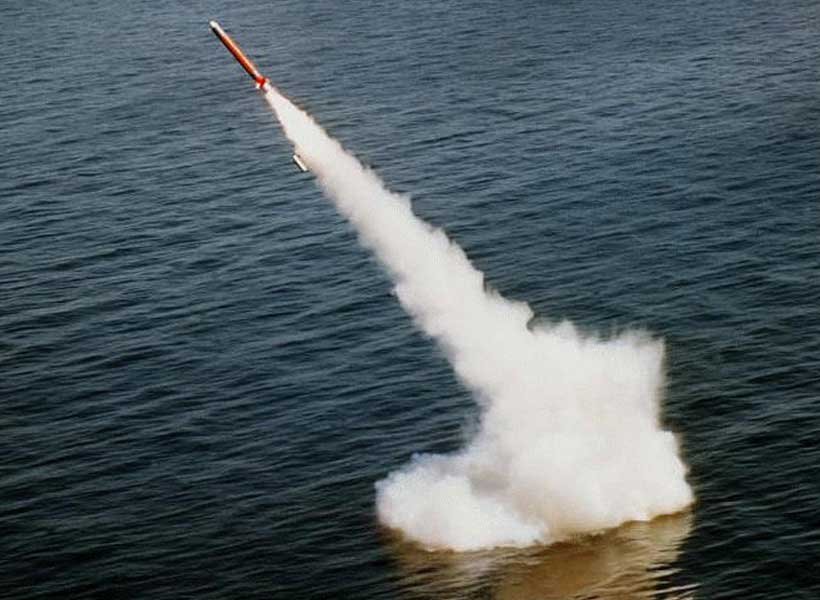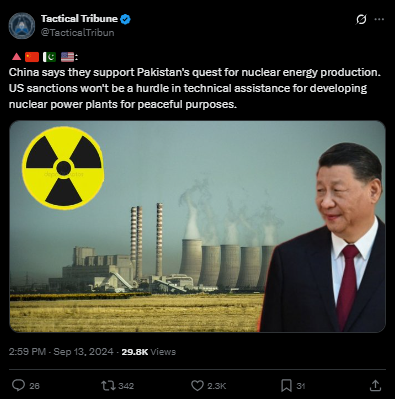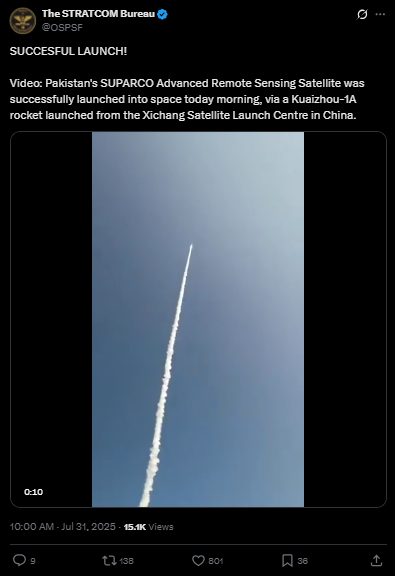Pakistan is at a turning point in its scientific and nuclear path in 2025. Its nuclear policy has evolved to a full-spectrum deterrence position, and its space organization, SUPARCO, is poised for technological breakthroughs. Amidst instability in the region and resurgence of Indo-Pak hostility, Pakistan’s attention towards nuclear upgradation and indigenous scientific progress has awakened global interest, suspicion, and strategic reassessment.
The Doctrine of Full-Spectrum Deterrence
Pakistan’s nuclear doctrine has undergone a transformation since the early 2000s, from minimum credible deterrence towards full-spectrum deterrence. This change is reflective of Islamabad’s position that India’s increasing conventional advantage and changing war-fighting tactics, above all the ‘Cold Start Doctrine’, might make conventional deterrence inadequate. In accordance with full-spectrum deterrence, Pakistan has the right to employ nuclear weapons at any phase of conflict if it observes a threat to its extinction. This entails the employment of tactical nuclear weapons (TNWs), short-range, low-yield missiles that are specifically designed to check quick Indian armor advances.
Nuclear Arsenal and Triad Capabilities
As of early 2025, Pakistan has an estimated 170 nuclear warheads, with an estimated rise to 200 warheads by the end of the year, thus ranking it alongside India. Pakistan has been actively working towards having a credible nuclear triad, including:
Land-based delivery systems:
Land-based delivery systems include the Shaheen-II(1500 km), Shaheen-III (2750 km), and Nasr (70 km). The Nasr is a battlefield tactical weapon that is at the heart of Pakistan’s deterrence against Cold Start.

Air-based capabilities:
The Ra’ad-II air-launched cruise missile (ALCM) has a range of 600 km and can be fitted to the JF-17 and Mirage III/V aircraft. It enables precision-strike capability against key Indian assets and enhances survivability through mobility.

Source: Military Watch Magazine
Sea-based deterrent:
Pakistan had test-fired the successful Babur-3 SLCM in 2017 with plans for deployment on Agosta-90B submarines and future Hangor-class AIP submarines in co-development with China. This is an essential part of the second-strike capability and completes the nuclear triad. The deployment of Ababeel, which is an MIRV missile and is widely believed to be an added measure by Pakistan to counter Indian missile defenses by allowing for one missile to carry more than one independently targetable warhead.

Source: Modern Diplomacy
The 2025 Confrontation and Risk of Escalation
In April and May of 2025, India-Pakistan tensions reached their highest point after a militant attack in Pahalgham, for which India accused Pakistan, as per tradition. India attacked Pakistan with deep missile attacks on Pakistani cities and infrastructure by crossing long-established conflict thresholds. India called it a so-called preemptive strike. Pakistan retaliated with synchronized missile and drone counterattacks, which marked one of the most severe military exchanges since 1999. This normalization of limited military clashes under the cloud of a probable nuclear fallout has caused anxieties over strategic miscalculations. Analysts have cautioned that although deterrence has so far kept a full-scale war at bay, its credibility is wearing thin in the event of fresh battlefield realities and vague thresholds of engagement.
Western Concern over Chinese Aid
The U.S. government has expressed concerns that China continues to aid Pakistan’s missile and nuclear infrastructure, particularly its cruise and tactical missile programs. China helps cover missile technologies, submarine platforms, and satellite infrastructure for Pakistan. To counter this emerging threat to itself, the U.S. has imposed export control sanctions on several Pakistan-associated companies that are engaged in dual-use technologies, allegedly for defying non-proliferation norms. Pakistan, meanwhile, insists that its nuclear program is ‘defensively strict ‘and functions in accordance with its doctrine of national survival. It asserts that India’s conventional superiority, backed by the U.S.-Israel defense partnerships, has left Pakistan with no choice but to seek effective deterrent capacity. Future deals regarding nuclear capacity and nuclear energy with China are inevitable:

Source: X/@TacticalTribun
SUPARCO’s Scientific Leap
While nuclear power often makes the news, Pakistan’s Space & Upper Atmosphere Research Commission (SUPARCO) has been quietly moving toward scientific independence. In 2018, it launched a satellite called ‘PRSS-1’. This remote sensing satellite was sent into space from the Jiuquan Satellite Launch Center in China.
‘PRSS-1’ is used to observe the Earth. It gives clear, high-quality images for many important tasks. These include land surveys, city planning, farming, and environmental protection. It also helps in times of natural disaster. The satellite can track floods, landslides, and melting glaciers. It also helps in planning large projects, such as CPEC.
SUPARCO is now working with Chinese companies to build ‘PakSat-2R’. This will be a new and better communication satellite. It is set to replace the older ‘PakSat-1R’.
These projects demonstrate that Pakistan is seeking greater control over its future. This includes progress in both defense and space technology. The new systems will help both civilians and the military. Together, they mark an important step toward a stronger and more self-reliant Pakistan.

Source: X/@OSPSF
Strategic Implications and Future Prospects
Pakistan’s nuclear program began as a cautious move to ensure survival. Over time, it evolved into a full-fledged doctrine of strategic depth, built to counter both conventional and sub-conventional threats. Alongside this, SUPARCO’s growing capabilities have reignited interest in techno-nationalism and homegrown innovation.
This two-track approach—militarized deterrence and scientific progress—mirrors the shifting nature of 21st-century security. Nuclear weapons can still prevent full-scale war. But space tech, cyber tools, and autonomous systems will shape tomorrow’s battlefields.
As SUPARCO gains ground and the nuclear triad nears completion, Pakistan must use these tools wisely. The goal should be to prevent escalation and promote regional stability. Today, the world must acknowledge Pakistan not just as a deterrent force, but as a central player in South Asia’s emerging strategic map.







